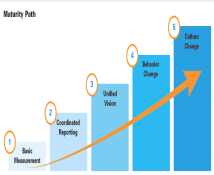There are several key components to successful enterprise-wide customer experience management (CEM) programs: consistent and visible commitment of leadership, a well-articulated strategy and willingness to drive cultural change.
Increasingly, a key enabler of success is a robust technology platform to support information needs on a widely distributed basis. The fact that many banks and other companies are thinking about implementing enterprise feedback management (EFM) systems alongside established financial, customer relationship management (CRM) and enterprise resource planning (ERP) platforms is a testament to their belief that effective CEM is essential to achieving key business goals.
As companies choose to invest in EFM platforms, they must understand that the task of selecting and implementing the right technology is only part of a much bigger and more complex strategic effort. The ultimate goal of any CEM initiative must be to enable achievement of key business outcomes through improving customer loyalty and other important relationship metrics. Reaching these objectives will require technological solutions accompanied by changes to company culture and operating procedures.
EFM platforms are becoming a necessity for many companies as the number of customer channels and touch points expands, online, mobile and other digital channels gain traction, and as technology enhancements raise the bar for customer service in banking and all other businesses. It is impossible for companies to collect and analyze this proliferating data without a sophisticated technology backbone spanning the entire organization.
EFMs provide several important features, including real-time feedback, richer data on the customer experience and reporting at the most granular level. Together, these features deliver an important benefit: the ability for companies to trigger immediate action to address issues revealed in the CEM data. Connecting real-time customer transactional feedback to the relevant employee becomes a powerful tool to demonstrate how well a company values and tends to the experiences of each one of its customers.
However, companies cannot complete this critical task of “closing the loop” with technology alone. EFMs should be implemented as part of a much broader strategy designed to achieve specific business goals by integrating CEM into workflows throughout the entire organization. In most cases, that mission will require significant procedural and even cultural changes. Although an EFM solution will be critical to success in this effort, the technology platform represents just one important piece of the essential components that facilitate those larger changes.
Given these strategic implications—and the cost and potential disruptions associated with any enterprise-wide technology project—it is critical that the broader CEM initiative start with the sponsorship and strong vocal backing of senior leadership. Such support is more readily secured if the CEM strategy itself is rooted in sound and attractive return-on-investment (ROI) assumptions. Before investing in a new technology platform, companies must demonstrate both the clear linkage betweenCEM feedback, improved results in customer satisfaction and business outcomes, and a compelling strategy for leveraging these connections to improve long-term financial performance.

